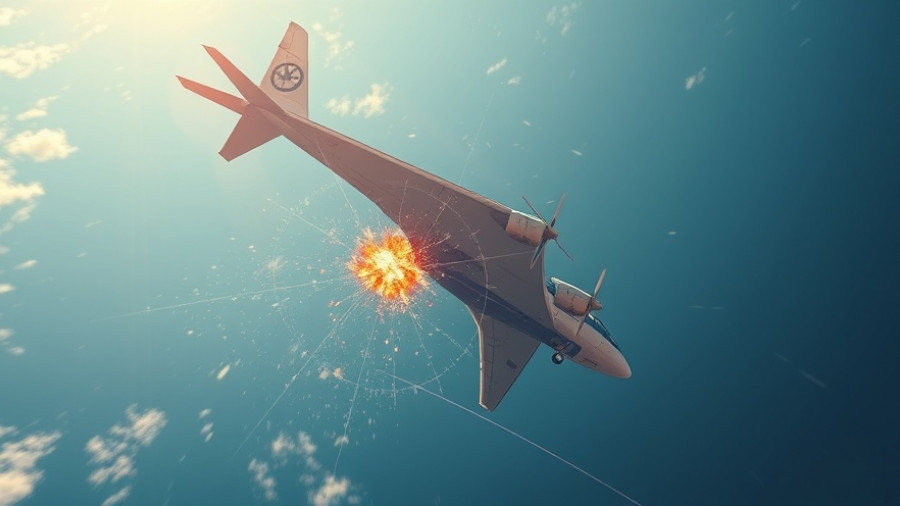
The Mysterious Impact on United Airlines Flight 1093
On October 18, 2025, passengers aboard United Airlines Flight 1093 experienced a shocking mid-air incident while traveling from Denver to Los Angeles. Approximately 37 minutes into the flight, the aircraft, a Boeing 737 MAX, was struck by an unidentified object at an altitude of 36,000 feet, breaking the cockpit's windshield and injuring the pilot. Eyewitness reports described the cabin atmosphere as tense and fearful, as those aboard contemplated the intimidating experience of flying at such heights, suddenly facing an unforeseen danger.
What Actually Happened? Unpacking the Theories
Initial theories about the source of the incident ranged from space debris to falling meteorites. Social media chatter amplified these speculations, as users debated the nature of the impact. However, a deeper dive into the incident revealed potential involvement from man-made sources, specifically a weather balloon operated by WindBorne, a meteorological company whose CEO quickly took to social media to concede the possibility of their balloon being in the vicinity at the time of the accident. This developing narrative paints a picture of how human activity often intertwines with aviation risks.
Exploring the Impact of Space Debris
The term 'space debris' encompasses defunct satellites, discarded rocket stages, and fragments from previous space missions. This ongoing issue has raised alarms among scientists and aviators alike, as the number of objects orbiting Earth has surged. While the risk of a direct hit from space debris is statistically low for commercial flights, the incident highlights the increasing intersection of air travel and space pollution. According to recent reports from the National Transportation Safety Board (NTSB), they remain vigilant about investigating the cracked windshield, analyzing data inputs from the flight recorder and radar systems.
The Role of Aviation Safety Protocols
This incident underscores the crucial role of rigorous aviation safety protocols. With the NTSB engaged in a thorough investigation, the importance of understanding hybrid threats to flight safety—combining natural phenomena and human errors—comes to the forefront. Passengers should feel reassured as authorities continue to prioritize their safety through meticulous analysis and corrective measures. Proactive communication from agencies like the Federal Aviation Administration (FAA) and NTSB can ease public concerns and enhance trust in the aviation system.
Conclusion: Reflections on the Unexpected
As the investigation unfolds, aviation experts are expected to deliver clearer insights into what caused the unusual incident. While the idea of space debris striking a commercial airline captures the imagination, the reality is far more complex, rooted in the significant impacts of human activity in the atmosphere. The WindBorne balloon incident, should it be validated, serves as a reminder of how a small object can create significant challenges and raise awareness about aviation safety amid our ballooning skies.
 Add Row
Add Row  Add
Add 



Write A Comment